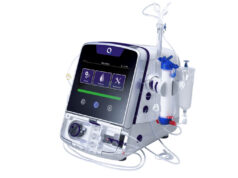 A new investigation into the association between end-stage renal disease (ESRD) and major adverse limb events (MALEs) has found that not only is it strong, but ESRD is particularly associated with below-knee amputation. The details of the study were presented at the Society of Interventional Radiology (SIR) Annual Scientific Meeting (4–9 March, Phoenix, USA).
A new investigation into the association between end-stage renal disease (ESRD) and major adverse limb events (MALEs) has found that not only is it strong, but ESRD is particularly associated with below-knee amputation. The details of the study were presented at the Society of Interventional Radiology (SIR) Annual Scientific Meeting (4–9 March, Phoenix, USA).
The authors, led by Yonatan Babore (Perelman School of Medicine at the University of Pennsylvania, Philadelphia, USA), state in their abstract that their focus was on uncovering the likelihood of MALEs and amputation with ESRD specifically in chronic limb-threatening ischaemia (CLTI) patients who were undergoing percutaneous vascular intervention (PVI) for their condition. They therefore designed a study in which they performed propensity score matching with the data from two contemporaneous cohorts, both of whom were undergoing PVI for symptomatic CLTI. The data was gathered from 2012 to 2022, and the cohorts were differentiated by ESRD status.
The database used included 628 patients, who underwent 1,297 lower extremity revascularisation procedures. These were then matched to 147 patients. Outcomes from procedures on 180 limbs were considered in total—90 limbs for each group—while both Kaplan-Meier and Cox proportional hazard analyses were performed with the data, intended to examine the effect of the presence of ESRD on the probability of MALEs. MALEs themselves were stratified into reintervention, meaning PVI or bypass surgery, as well as major amputation. This latter category was subdivided into above-knee amputation and below-knee amputation.
Babore et al found that, following a PVI procedure, 31.3% of patients in the matched cohorts experienced a MALE. Among those experiencing ESRD, 45.7% experienced a MALE while only 18.2% of those without ESRD did so. On major amputation, patients without ESRD experienced an event at a rate of 5.2%, while those with the condition did so at the higher rate of 27.1%. The proportional hazard analysis, the authors outline, found that ESRD “was an independent predictor of MALE” (hazard ratio [HR] 3.15; 95%, confidence interval [CI] 1.58–6.29; p ¼ 0.001), major amputation (HR 7.00; 95% CI 2.06–23.79; p ¼ 0.002), and below-knee amputation (HR 7.56; 95% CI 1.71–33.50; p ¼ 0.008).
Summarising the findings, the authors state that ESRD is “strongly predictive” of both MALE and major amputation for CLTI patients who are receiving PVI procedures, and particularly so in the case of below-knee amputation. Finally, they look forward, calling for more research: “These patients warrant closer follow-up, and new methods may become necessary to predict and further reduce their amputation risk.”












